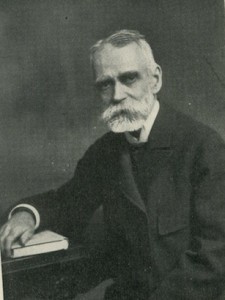 Recently we dusted off a Library Journal article from 1876 in which Samuel Green speaks to the “Personal Relations Between Librarians and Readers.”* In a series of vignettes about the reference needs of patrons inspired by his time with the Worcester Free Public Library, Green describes scenes that parallel the needs of users today. 140 years later, everything about libraries has changed, except for the many things that are exactly the same.
Recently we dusted off a Library Journal article from 1876 in which Samuel Green speaks to the “Personal Relations Between Librarians and Readers.”* In a series of vignettes about the reference needs of patrons inspired by his time with the Worcester Free Public Library, Green describes scenes that parallel the needs of users today. 140 years later, everything about libraries has changed, except for the many things that are exactly the same.
Consider this bit of advice on helping readers search for information:
“...many persons who use a library have to be instructed in regard to the use of catalogues, and need practice before they can use them to the best advantage. Entries are overlooked. Discrimination is lacking for separating good books from those of little merit, and books adapted to the capacity and particular needs of the user from those which are unsuited to his requirements.”
Over the course of the article Green outlines four responsibilities the late-19th century library should master, all of which still apply today:
- Teach people how to use the library
- Answer readers’ questions
- Promote the library within the community
- Aid the reader in the selection of good books
How do we best bring these concepts from the 1870s to libraries in the digital age? Let’s look at the first two responsibilities, then focus in on numbers three and four next week.
- Teach people how to use the library
This has never been more critical, especially in a time where the concept of “Library” includes internet research. The goal has always been to help users become more independent. Fortunately, today the tools librarians have at their disposal don’t end with face-to-face instruction: from information literacy courseware, to to online library tours and tutorials, there are many exciting new ways to help.
We like to think Mr. Green would have been a fan of the way our Topic Pages promote discovery and aid the researcher as they explore an overview of their desired topic, identify keywords and related subjects, and link easily to other trusted resources throughout the library collection.
- Answer readers’ questions
The means people have for asking questions have changed greatly since the 19th century. Green was clearly picturing face-to-face interactions, and probably would have been confused by the concept of telephones, much less Twitter or Facebook, but given time to acclimate himself to these new developments, he probably would have appreciated the new avenues of access to library professionals. Today a librarian answering questions via web chat can direct users to digital reference books and databases. The user’s needs, and the librarian’s skillful guidance are the same, but the technology allows for unprecedented access to resources previously only housed in a few of the world’s collections.
Use the comments section to give us your thoughts on reference then and now, or continue the discussion on Twitter with the hashtag #CredoChat
*Green, Samuel. 1876. “Personal Relations between Librarians and Readers.” Library Journal 1 (October 1876): 74–81.
